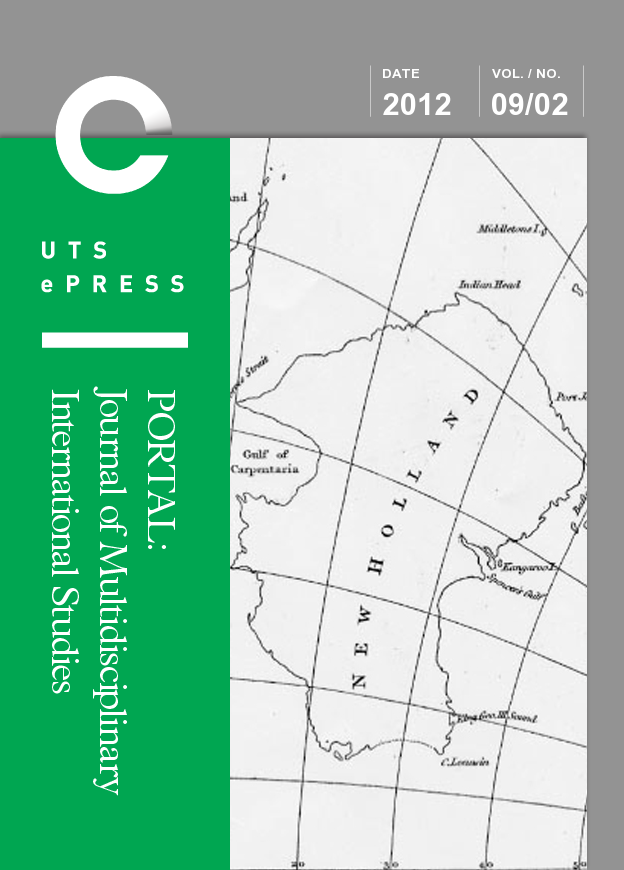The Sumo World as Seen Through the Gambling Cases of 2010
Main Article Content
Abstract
In summer 2010, a scandal in gambling on baseball matches implicating sumo wrestlers and their bosses was reported day after day by Japanese mass media. This scandal revealed the connections between the sumo world and criminal organizations and lead to unprecedented actions, such as the dismissal of the active Ozeki Kotomitsuki, one of the top Japanese sumo wrestlers, and the suspension of live television broadcasting of the sumo tournament. The reason why the Japanese public instigated mass public debates may relate to the notion that sumo has an intimate association with the gods, reinforced with its special position in Japanese tradition and culture. This article first presents a brief history of sumo and explains its particular characteristics. Then it provides a summary of the chain of events in the baseball gambling scandal and the responses from the Japan Sumo Association. In conjunction with examining the connection of the sumo world to criminal organizations, this article also identifies key managerial problems with the Japan Sumo Association.
2010年賭博事件にみる相撲界
2010(平成22)年夏、力士や親方らの賭博事件が、連日日本のマスコミをにぎわした。これまでも取りざたされてきた相撲界と暴力団との関係が明らかになり、現役の大関琴光喜の解雇やNHKでの相撲中継中止など、前代未聞の事態が続いた。相撲界のスキャンダルが大きな議論を巻き起こすのは、相撲が神事とのかかわりを持つものとして意味づけられ、日本固有の伝統を担う独特な存在だとする考えがあるからだろう。本論文では、まず相撲の歴史を簡単に振り返り、相撲の持つ特異な性格を見る。次に一連の野球賭博事件の概要とそれへの対応を取り上げる。最後に相撲界と暴力団の接点を視野に入れながら、日本相撲協会の問題について考察する。
Article Details
Section
For submissions from 31st March 2014 onwards, authors who submit articles to this journal for publication agree to the following terms:
a) Retaining Copyright and Granting Rights:
Authors retain copyright and grant the journal the right of first publication. The work is simultaneously licensed under a Creative Commons Attribution License, allowing others to share and adapt the work. Acknowledgment of the work's authorship and initial publication in this journal is required.
b) Non-Exclusive Distribution:
Authors may enter into separate, additional contractual arrangements for the non-exclusive distribution of the journal's published version of the work (e.g., posting to an institutional repository or publishing in a book). Acknowledgment of its initial publication in this journal is required.
c) Online Posting and Citation Advantage:
Authors are encouraged to post their work online (e.g., in institutional repositories or on their website) prior to and during the submission process. This may lead to productive exchanges and earlier and greater citation of the published work (See The Open Access Citation Advantage Service). If authors include the work in an institutional repository or on their website, they must acknowledge the UTS ePRESS publication with relevant details.
d) Creative Commons Attribution (CC-BY) License Awareness:
Authors should note that the CC-BY License permits readers to share (copy and redistribute) and adapt (remix, transform, build upon) the work for any purpose, including commercial use. Proper credit, a link to the license, and indication of any changes made must be provided. The manner of doing so must not suggest endorsement by you or your publisher.
For Volume 10 No 2 (2013) and earlier, the following copyright applied:
Authors submitting a paper to UTSePress publications agree to assign a limited license to UTSePress if and when the manuscript is accepted for publication. This license allows UTSePress to publish the manuscript in a specific issue.
Articles published by UTSePress are protected by copyright, with rights retained by the authors, who assert their moral rights. Authors control translation and reproduction rights to their works published by UTSePress. All rights are reserved worldwide by UTSePress, and downloads of specific portions are permitted for personal use only, not commercial use or resale.
For reprint or usage permissions, please direct inquiries to UTSePress via the journal's main editor, Dr. Nicholas Manganas at [portal.scholarly.journal@gmail.com]. Reprint permission requires acknowledgment of both UTSePress and PORTAL in the format advised by the journal editor.
